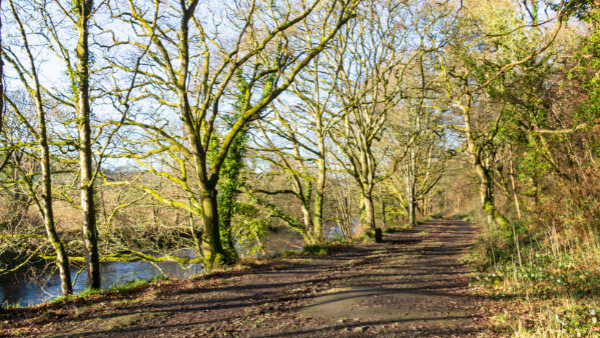After nearly two years the Environment Bill has finally made it onto the statute books as the Environment Act 2021. Its enactment, presumably timed to coincide with the end of COP 26 in Glasgow, heralds the introduction of some fairly wide-ranging and significant changes, which will affect rural land owners and businesses for years to come.
In a series of articles, we will consider how this new legislation will impact rural land ownership and where the opportunities for rural businesses lie. We start with an overview of the new Act and focus on its scope and when rural measures will come into force.
New rural and agricultural framework
The arrival of the Environment Act 2021 comes a year after the enactment of the Agriculture Act 2020 and, together, they create a statutory framework for a completely new direction for rural and agricultural policy across the UK.
Certain measures within both pieces of legislation comprise devolved matters and we are already seeing considerable divergence in policy between the four home countries of the United Kingdom. This will only increase as devolved governments make choices which reflect their own political priorities and landscape.
Overview of new measures
So, what does the new Environment Act do? The Act is long (278 pages) and wide ranging, including various different parts as follows:
- Environmental governance: the setting of targets, improvement plans, monitoring and the creation of a statutory “Office for Environmental Protection”.
- Waste and resource efficiency: targeting producers with responsibility for costs of waste disposal; addressing waste management, enforcement and regulation.
- Air quality and environmental recall: updated requirements regarding air quality and the recall of vehicles.
- Water: updated requirements for water resources and drainage and sewerage management plans and water quality; reducing storm overflow sewerage discharges; modification of water abstraction licences and valuation of land (including agricultural land and buildings) in a drainage district.
- Nature and biodiversity: Biodiversity gain in planning, local nature recovery strategies, conservation strategies, habitats regulation, tree felling and planting and restrictions on use of commodities in commercial activity, which place forest at risk.
- Conservation covenants: A new enforceable legal structure which will allow land owners to give long term commitments, regarding the use and management of land, which are enforceable by a responsible body.
- Specific governance measures for Northern Ireland
Measures affecting rural land owners and businesses
Although virtually all of these measures affect rural land owners and businesses in some capacity or other, we are already finding that the nature, biodiversity and conservation covenants sections are raising the most issues and that these also tie in closely with provisions in the Agriculture Act 2020.
The concept of natural capital has become familiar to rural land owners over the past decade and the current moves to redirect agricultural subsidies towards schemes, which protect and enhance natural capital assets for wider environmental benefit, are starting to give these assets a greater financial significance.
The new biodiversity gain measures in the Environment Act take that process a giant step forward and when coupled together with the legal structure of a conservation covenant, we have a practical way to turn natural capital into significant income producing assets.
Biodiversity gain
Certain pilot local planning authorities have informally been imposing a 10% biodiversity gain on planning consents for some time. The requirement has also been included in General Development Orders for large infrastructure projects, but part 6 of the Environment Act is the first time we have seen this obligation included as a blanket statutory obligation.
The Secretary of State has power to set up a register of biodiversity gain sites and can control eligibility criteria for registration of a site and for the identity of applicants. The Act also provides for the creation of a system of statutory biodiversity credits, which can be bought and sold by parties involved in the development of land.
In relation to England only, schedule 14 imposes a new mandatory obligation to meet a biodiversity gain objective on the grant of any new planning permission for development; that objective is met by a 10% increase in biodiversity value pre and post-development, either in the onsite habitat, in any registered offsite biodiversity gain allocated to the development or in statutory biodiversity credits purchased for the development.
A new biodiversity condition will be imposed in every planning permission, which will prohibit the starting of any development until a biodiversity gain plan has been submitted and been approved by the planning authority. The plan must specify various matters, including how the development is going to minimise the adverse effect of the development on the biodiversity of the onsite habitat, how the biodiversity values are calculated and how the biodiversity gain will be met.
Local nature recovery strategies
The Environment Act requires local nature recovery strategies to be created to cover the whole of England. These strategies will include a statement of biodiversity priorities for the relevant area and a local habitat map or maps for the whole strategy area. The statement will include a description of opportunities for recovering or enhancing biodiversity and the priorities for the strategy area.
Once created these strategies are likely to impact on the value and use of land; they will no doubt tie in with the awarding of agreements under the Local Nature Recovery and Landscape Recovery tiers of the new Environmental Land Management Scheme (ELMS), providing an income stream for the relevant land. Beyond subsidies, we may also find that such strategic areas of land become a focus for natural capital schemes and biodiversity gain sites, which may attract considerable capital sums.
Tree felling and planting
The Environment Act strengthens the existing protection for trees set out in the Forestry Act 1967, in particular for situations in which woodland changes hands and required restocking has not been carried out by the previous owner.
Regions affected and date for introduction
The biodiversity and conservation covenants parts of the Act apply to both England and Wales and will come into force on a date to be appointed by the Secretary of State in specific regulations. In the Government’s response in July 2019 to the consultation on biodiversity gain, it indicated that it would make provision in the Bill for a transition period of two years from the date on which the Bill received Royal Assent. In fact, this appears to have been left open with the biodiversity provisions in Part 6 due to come into effect “on such day as the Secretary of State may by regulations appoint”.
Like the Agriculture Act 2020, the Environment Act 2021 creates a framework on which new policy can be developed. In some areas the Act goes into considerable detail, however in others, the specifics are left for consultations further down the line.
Reflecting back on the last 5 years which have elapsed since the Brexit vote in 2016, what is striking is the length of the journey the country has made in a fairly short space of time. A decade ago most of the new measures included in this new Act would have been unthinkable, yet many have made it through consultations and Parliament with few fundamental objections.
If you require more information on this article, please contact Ben Sharples.


